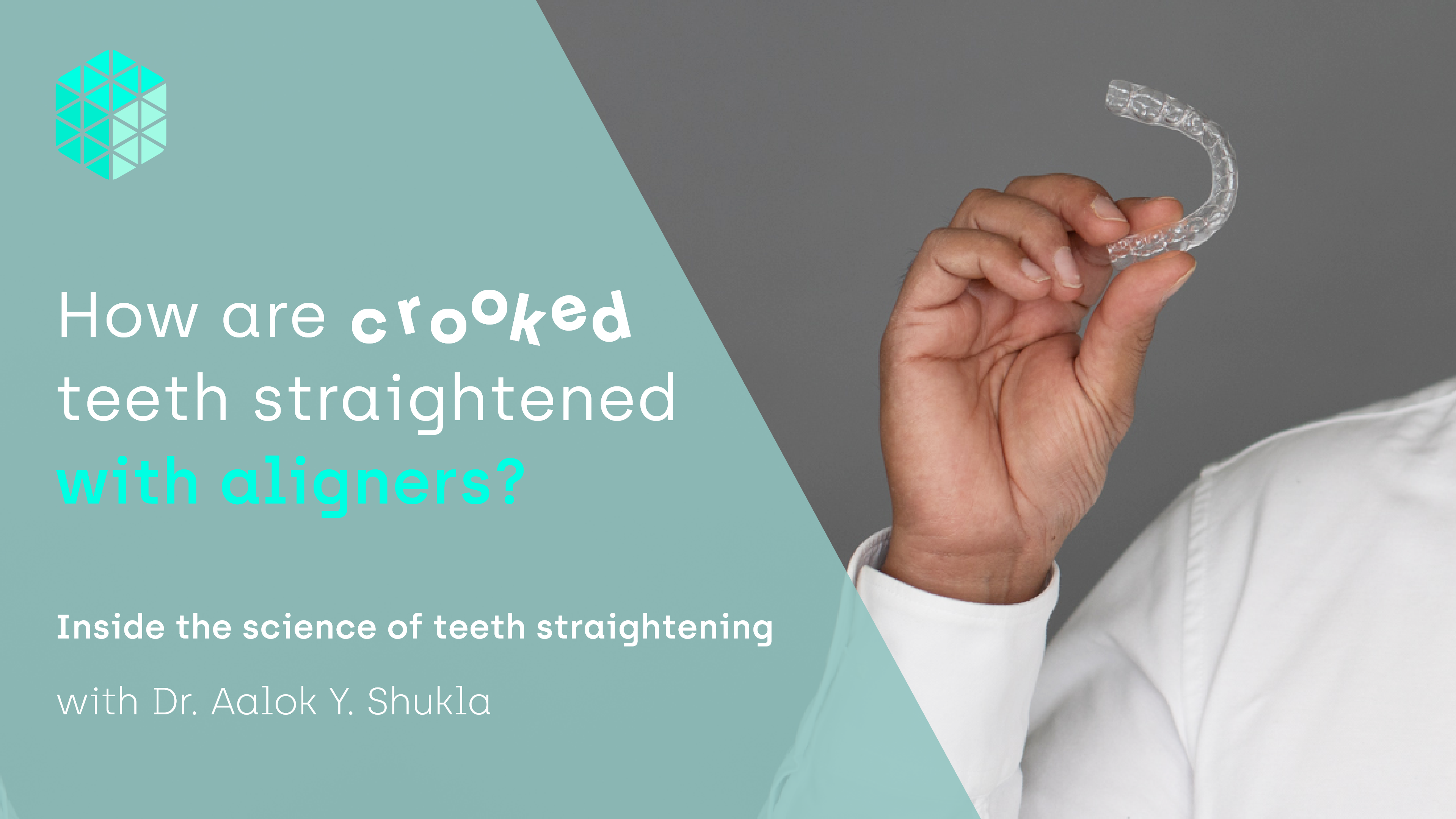
How are crooked teeth fixed with aligners?

Check out all our Straight Teeth TV Season 2 episodes on YouTube now!
This week on the science of teeth straightening using invisible aligners, our CEO and co-founder Dr. Aalok Y. Shukla will be explaining everything you need to know about crooked teeth: how are crooked teeth fixed with aligners?
#1 What are crooked teeth?
Before explaining how are crooked teeth fixed and straightened with aligners, it’s important to understand that crooked teeth are the result of several factors.These include your jaw and dental arch shape, as well as the multi-directional forces in your mouth created by your tongue, lips, and cheek muscles.
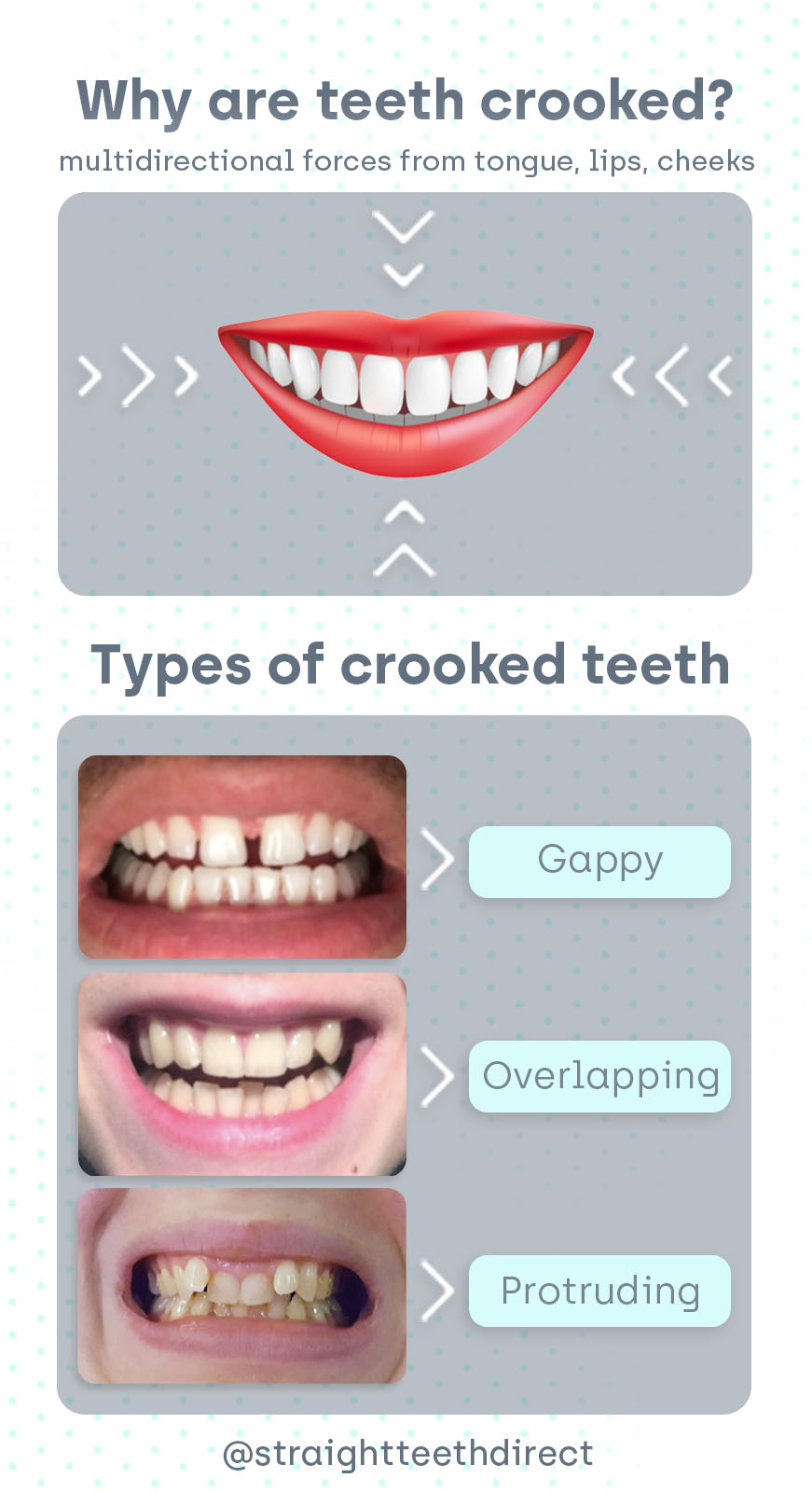
These forces come from all sides and apply constant pressure to your teeth, often causing them to become crooked in one of these three ways:
- Gappy: when the dental arch is too wide or teeth are too small
- Overlapping: when the dental arch is too narrow and teeth become crowded
- Protruding: when the dental arch is too narrow and teeth have been pushed to stick outwards
Luckily, these issues can be addressed quite easily with invisible aligners for teeth straightening in up to 80% of usul cases using what we call arch expansion.
#2 Crooked teeth illusion
Did you know that crooked teeth can also simply be the result of an illusion? We don’t mean the smoke and mirrors kind: tooth shape can greatly influence how crooked or straight your teeth appear to be. Teeth with chipped or skew edges may be in perfect alignment, but still look crooked because of their shape. Here’s an example:
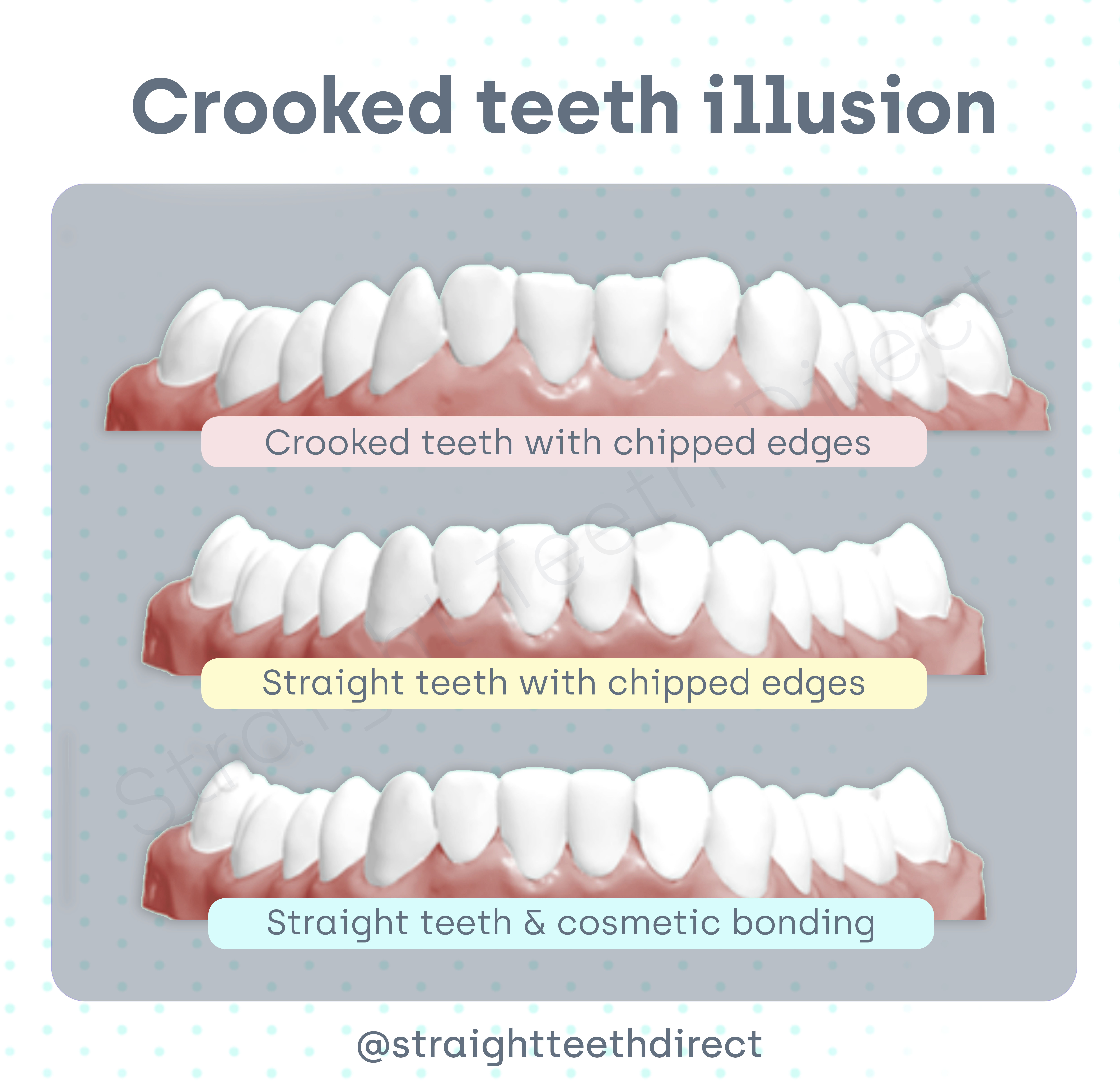
Now, seeing as aligners are used to straighten your tooth position and do not change the actual shape of your teeth, they would not make a difference to the appearance of the smile in the example above. A process known as cosmetic bonding, adding a strong, tooth-coloured composite resin to your teeth to change their shape, might be a better solution here to restore visual balance to the smile.
#3 How tooth shape affects teeth straightening
Not only can skew edges affect your smile’s appearance, there are actually three distinct tooth shapes that also influence how your smile will look once all teeth are aligned. These tooth shapes are:
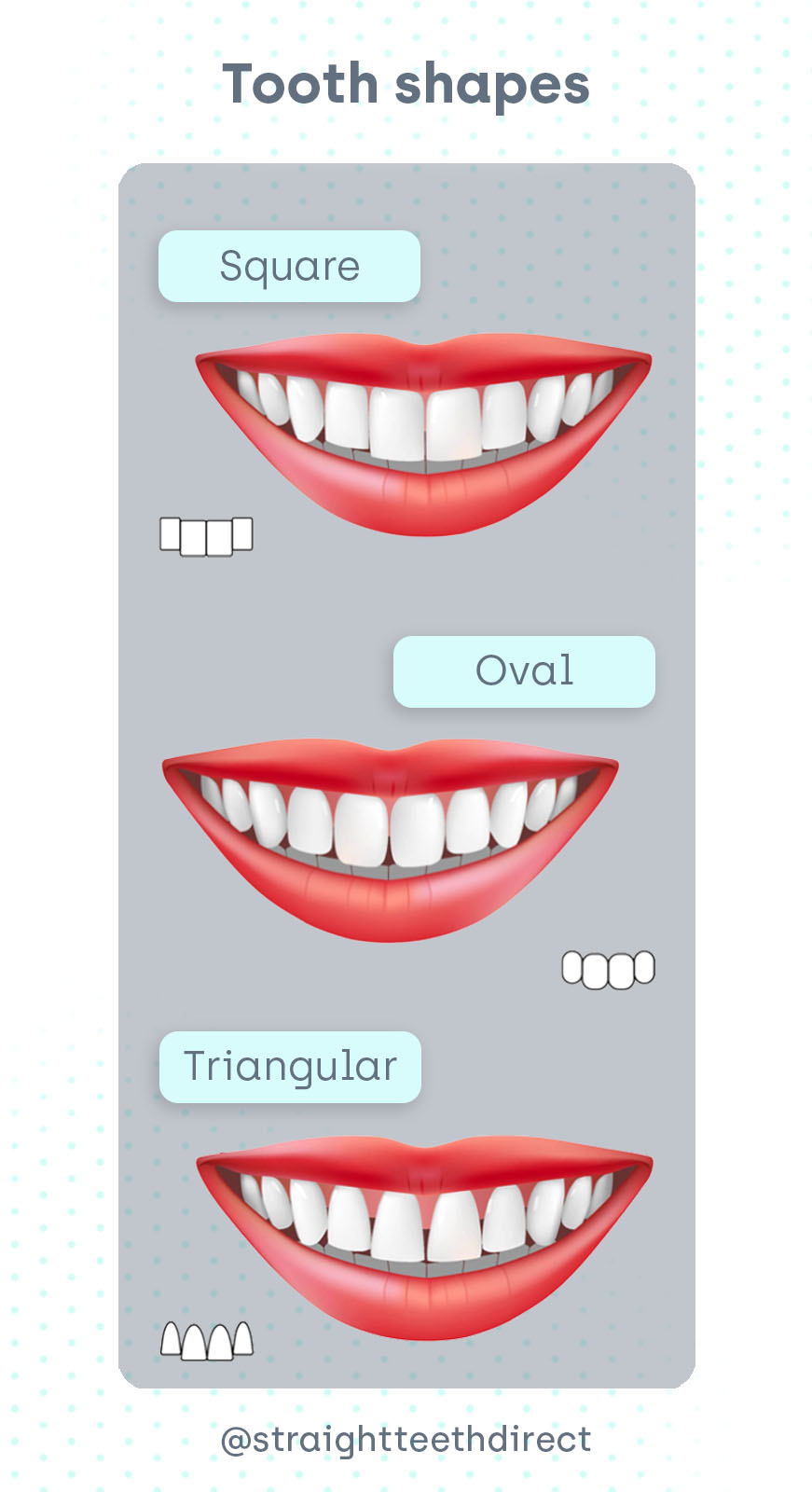
Rectangular teeth have straight, parallel edges and fit next to each other without gaps on the top and bottom.
Oval shaped teeth have rounded bottom edges. Their bottom edges don’t touch, but the tops of the teeth still fit next to each other quite snugly.
Triangular teeth edges slope outwards and down like a triangle. When teeth touch at the bottom (wider) edge, a small space is left between the top teeth, called a black triangle.
Once we have considered the arch and tooth shape, we can really begin to identify what issues need to be addressed to create a straight, balanced smile using the invisible aligners for teeth straightening.
#4 How are crooked teeth fixed at home?
We already mentioned the term arch expansion, and that is the key factor in at-home teeth straightening. It means creating space between your teeth, just the right amount to allow them to sit nicely in line. This can generally be done in three different ways:
- IPR (inter proximal reduction) – shaving down the tooth enamel, creating space between teeth by making them smaller
- Tooth extraction – removing entire teeth to create more space overall
- Arch expansion – widening the dental arch to create more space between teeth
As you can imagine, the first two options are the most invasive and are permanent: you cannot replace removed enamel if too much has been shaved off (only through cosmetic bonding with a resin material or with veneers) and once a tooth is extracted it cannot be put back in place (this would need to be done with a prosthetic tooth). All this would also have to be done at a dental clinic. That leaves arch expansion, the least invasive procedure, and the method we use at Straight Teeth Direct™ to allow you to straighten teeth at home: your tooth shape stays tact, no teeth are removed, and the entire process can be completed safely and remotely.
#5 The three phases of teeth straightening
How are aligners used to straighten teeth, and how are crooked teeth fixed? To put it simply, there are three main phases that make up your aligner teeth straightening treatment at home. These are:
- Expansion – widening the dental arch to create the necessary space for teeth to begin aligning without being in each other’s way
- Alignment – moving the individual teeth for them to align nicely next to each other in their new positions
- Fine tuning – any last small adjustments to give your new, straight smile its finishing touches
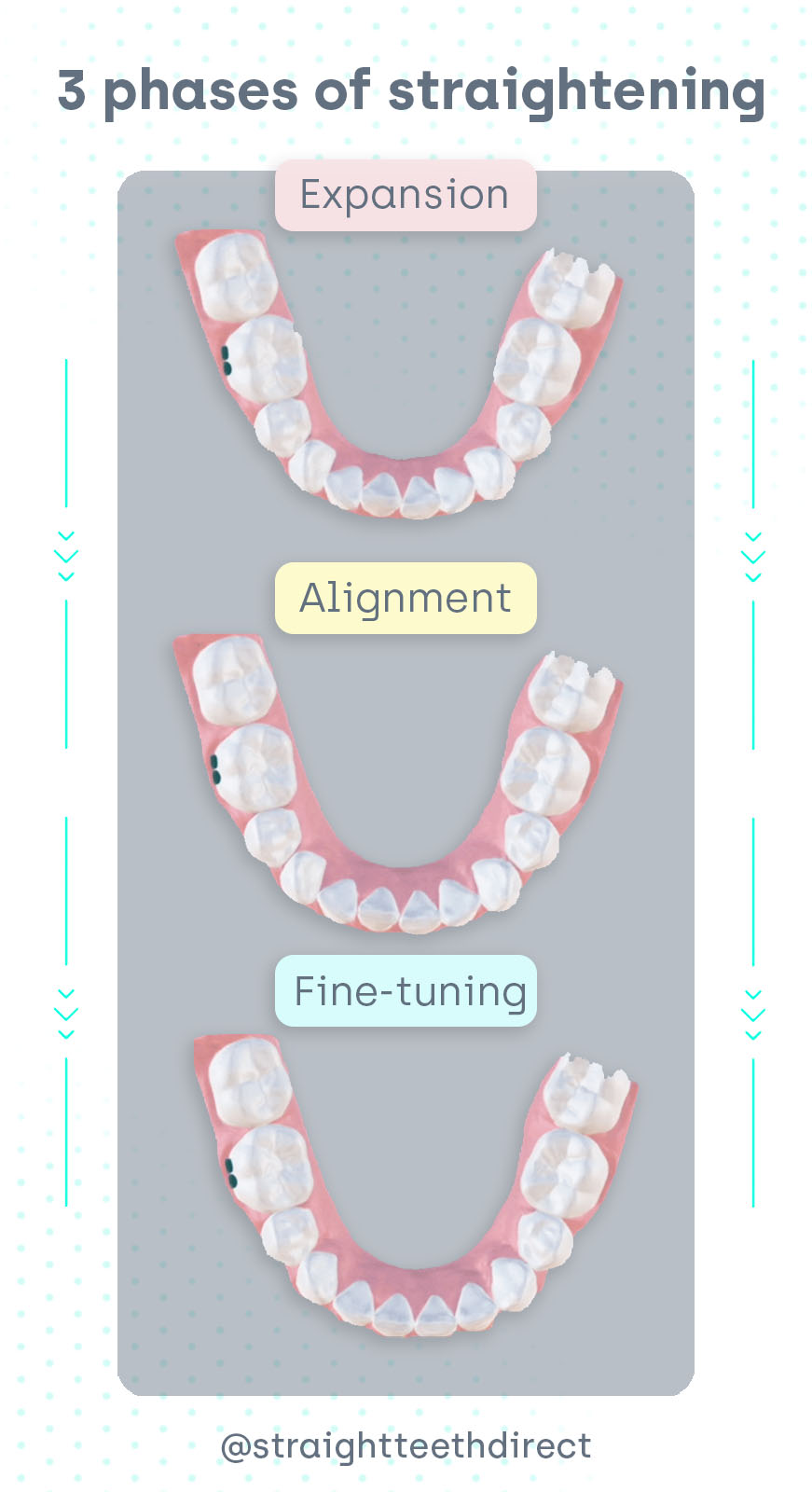
As you can imagine, these changes do not occur overnight. While traditional teeth straightening methods using fixed braces take up to and over 2 years to complete, you can achieve your dream smile in as little as 6-9 months with the Straight Teeth Direct™ remote system.
#6 Can you speed up the teeth straightening process?
Teeth straightening is not a quick fix, and every treatment journey is different. Attempting to skip aligners or wear them for less time than recommended to speed things up will actually result in the opposite: it can seriously damage your dental health and can require additional aligners to correct the damage done.
Your individual Straight Teeth Plan details how many aligners are required to achieve your smile goals, as well as a duration prediction. This prediction is based on your treatment going exactly as planned, and, while speeding it up is not an option, there are some things you can do to best remain within the predicted duration:
- Wear your aligners as recommended by your dentist and your treatment plan, usually 22h per day for 2 whole weeks per aligner stage, to give your teeth the right amount of time under pressure to cause movement and stabilisation.
- Use your chewies 3 times a day for 3 minutes each! This significantly helps the aligner fit and effectiveness, encouraging proper movement.
- Maintain proper oral hygiene, brushing after every meal, flossing every day. If hard plaque begins forming due to lack of cleaning, it can inhibit tooth movement.
- Remove your aligners to eat and drink anything other than water, and store them in your safe aligner case when not in use. Not doing so can damage them, requiring replacement and resulting in longer treatment.
- Stay on track with your monthly virtual reviews, as this is where your dentist can monitor your progress to give the all-go for your next aligners. No review – no new aligners!
- In case you do need additional (refinement) aligners due to a slower biological tooth response than expected, wear them exactly as recommended to avoid even longer treatment time.
If you follow all the above steps, you will set yourself up for smile success and optimum treatment duration!

Still thinking about it?
Fill in your email to receiveyour free guide!


















